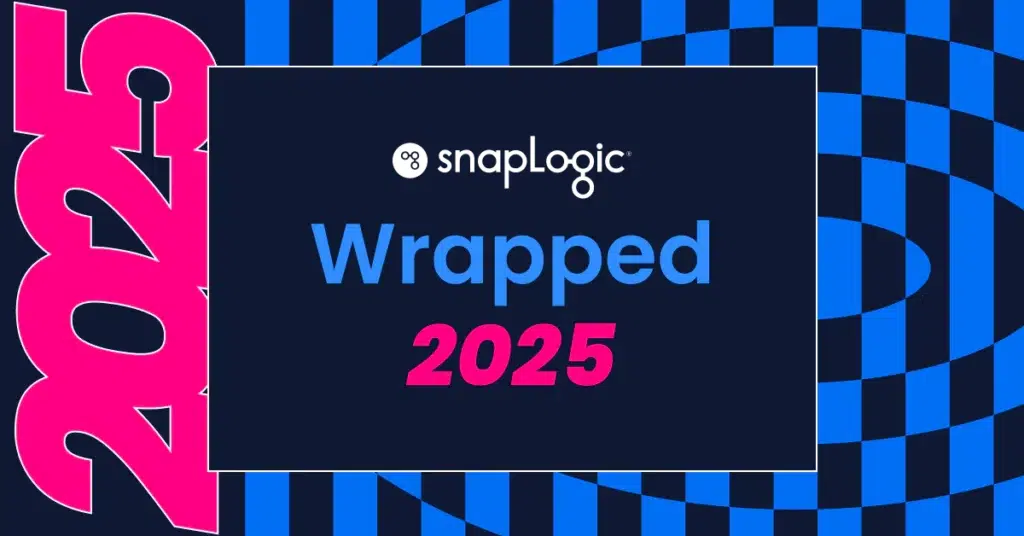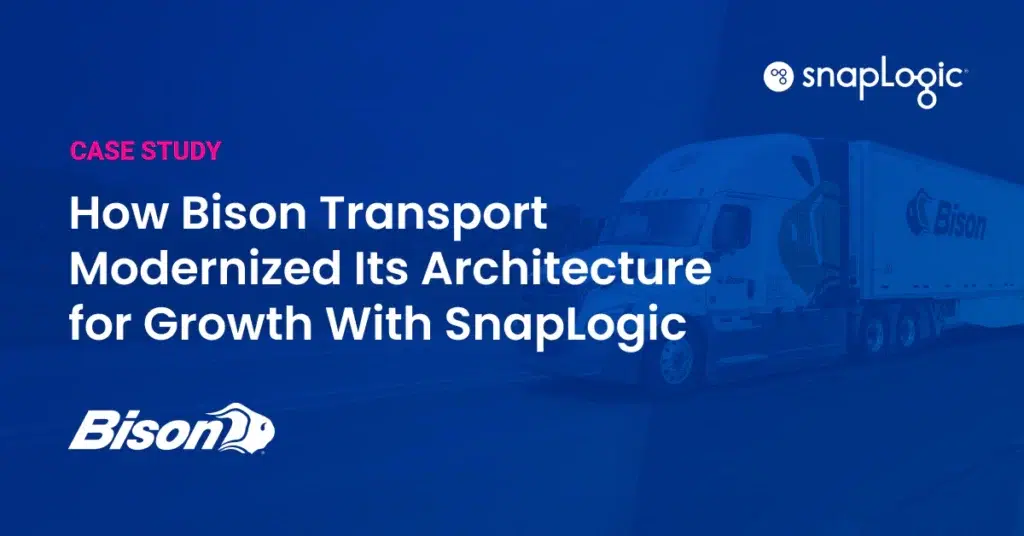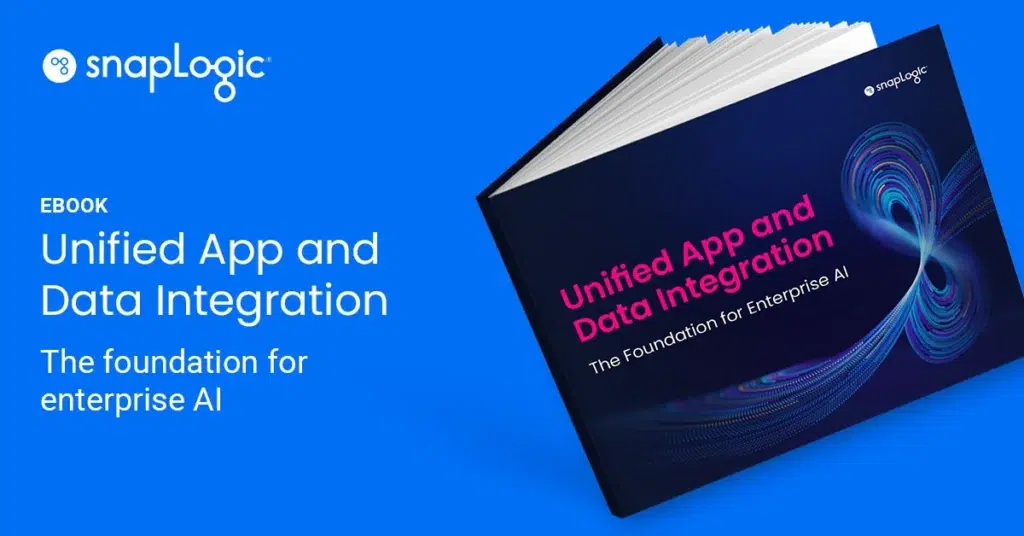TLDR: Generative AI (GenAI) is a type of artificial intelligence that learns from large amounts of data and then creates new content such as text, images, code, or music. It helps organizations save time, spark ideas, and reduce repetitive work.
Generative AI is reshaping the way organizations approach work. Instead of starting every project with a blank page or a manual process, teams can now rely on intelligent systems that propose ideas, draft content, or build designs in seconds. The technology learns from vast collections of information and then uses that knowledge to produce text, images, music, or code that feels fresh and original.
At SnapLogic, these capabilities are built directly into products such as SnapLogic AI, AgentCreator, and SnapGPT (Integration Copilot). The goal is simple: give people more time for creative and strategic thinking by letting AI handle the repetitive tasks that slow them down.
How GenAI Works
Generative AI starts with data. To create anything useful, the system needs a huge volume of information to learn from. That could be text, images, audio, code, or a mix of different formats. The more varied and high quality the material, the better the system becomes at spotting patterns and making connections.
Once the data is prepared, advanced models begin their training. Large language models (LLMs), for example, study how words fit together to form meaning, while other architectures focus on visuals, sound, or structure. Over time the model develops a sense of how language flows, how images are composed, or how music is arranged. It does not memorize every example. Instead, it builds an internal map of relationships that lets it predict what comes next.
After training, the model can be refined for specific jobs. A company might adapt a general model so it can draft marketing copy, generate legal documents, or recommend financial insights. This step ensures that the model is not just creative but also relevant to the task at hand.
When the system is ready, it begins to generate. It might produce a first draft of a report, design a new layout for a product page, suggest code that solves a recurring problem, or even create an entirely new image. The key is that the output reflects both the breadth of the data it has studied and the focus of its fine-tuning.
This cycle—learning from data, adapting to context, and producing original content—explains why GenAI feels so powerful. It is not following rigid instructions. It is using what it has learned to build something new, often in ways that surprise even the people who designed it.
Behind the scenes, GenAI has a few essential parts:
| Component | What It Does |
|---|---|
| Data preparation | Collects diverse, high-quality data, then cleans and formats it. Without good data, the model cannot perform well. |
| Learning models | Uses approaches like Large Language Models (LLMs) or Variational Autoencoders (VAEs) to learn patterns in text, images, code, or music. |
| Fine tuning | Adapts a general model to specific jobs, such as generating marketing copy, creating product mockups, or drafting legal templates. |
| Generating output | Once trained, the model produces something new. It can write a draft, design visuals, suggest code, or analyze data. |
Use cases for GenAI in the enterprise
GenAI is already helping companies across nearly every function. Here are some practical examples:
- Marketing and Content: Draft blogs, ads, and social posts in minutes. Generate campaign images or videos so creative teams can focus on strategy.
- Customer Support: Use AI assistants to handle FAQs, triage requests, and provide quick answers, leaving complex cases for human agents.
- Product and Engineering: Generate prototypes, suggest code snippets, and handle routine development tasks so engineers can spend more time innovating.
- Data and IT Operations: Build synthetic datasets when real data is limited or sensitive. Clean and improve data quality for analytics.
- Sales and Personalization: Tailor pitches, proposals, and product recommendations to individual customer needs and behaviors.
- Human Resources: Screen resumes, schedule interviews, and design custom training materials or simulations for employees.
- Finance and Risk: Automate finance reconciliation, produce reports, and spot unusual patterns that may signal fraud.
- Legal and Compliance: Review contracts, draft agreements from templates, and monitor compliance documents.
- Supply Chain: Forecast demand, optimize inventory, and plan efficient logistics routes.
These examples show how GenAI can free up people for higher-value work, while making businesses faster and more adaptable.
Security and privacy of Generative AI (GenAI)
For Generative AI to deliver value, it has to be deployed safely. Companies need to treat data protection and privacy as non-negotiable. That means putting strict access controls in place, keeping systems transparent so people understand how they work, and updating safeguards as new risks emerge. Security is never a one-time task. It requires ongoing reviews and adjustments to stay ahead of threats.
Handled in this way, GenAI becomes more than a powerful tool. It represents a new stage in technology where machines can contribute creativity and innovation, working alongside people instead of simply automating routine tasks. This partnership between human judgment and machine intelligence is what makes the future of GenAI so promising.
Well Known GenAI Tools
Generative AI now spans text, images, multimodal input, and specialized reasoning. These are some of the most widely recognized models in use today.
ChatGPT (OpenAI)
ChatGPT brings together OpenAI’s flagship models, from GPT-4 to the newest GPT-5. It can generate text, analyze documents, reason across long contexts, and even handle images and audio in real time. With each generation, ChatGPT has expanded from writing and Q&A into a multimodal assistant that supports research, creativity, customer service, and software development.
Claude (Anthropic)
Claude has quickly become a strong competitor with models like Claude Opus 4 for complex reasoning and Claude Sonnet 4 for broader contexts and faster performance. Claude is valued for its balanced style, careful responses, and ability to handle detailed work such as coding or contract analysis.
Gemini (Google DeepMind)
Gemini includes advanced models such as Gemini 2.5 Pro and Flash. These offer very large context windows, strong reasoning, and multimodal capabilities, making them well suited for enterprise tasks that involve multiple data types.
Gemma (Google DeepMind)
Gemma is Google’s open-source family of models. The most recent, Gemma 3, is designed for efficiency and accessibility, offering multimodal support while remaining easier to deploy than proprietary models.
Mistral AI
Mistral is known for releasing both large closed models and smaller open ones. Their Mistral Large 2 model delivers high-end reasoning and code generation, while their open models are widely used in the developer community for speed and flexibility.
Image Generation Models
Tools such as Stable Diffusion XL, Flux, and Midjourney produce high-quality visuals from written prompts. They are popular for creative work, marketing, and product design, giving teams a fast way to experiment with visual concepts.
Turbo-charge your business by creating LLM-powered applications and automations in minutes.








